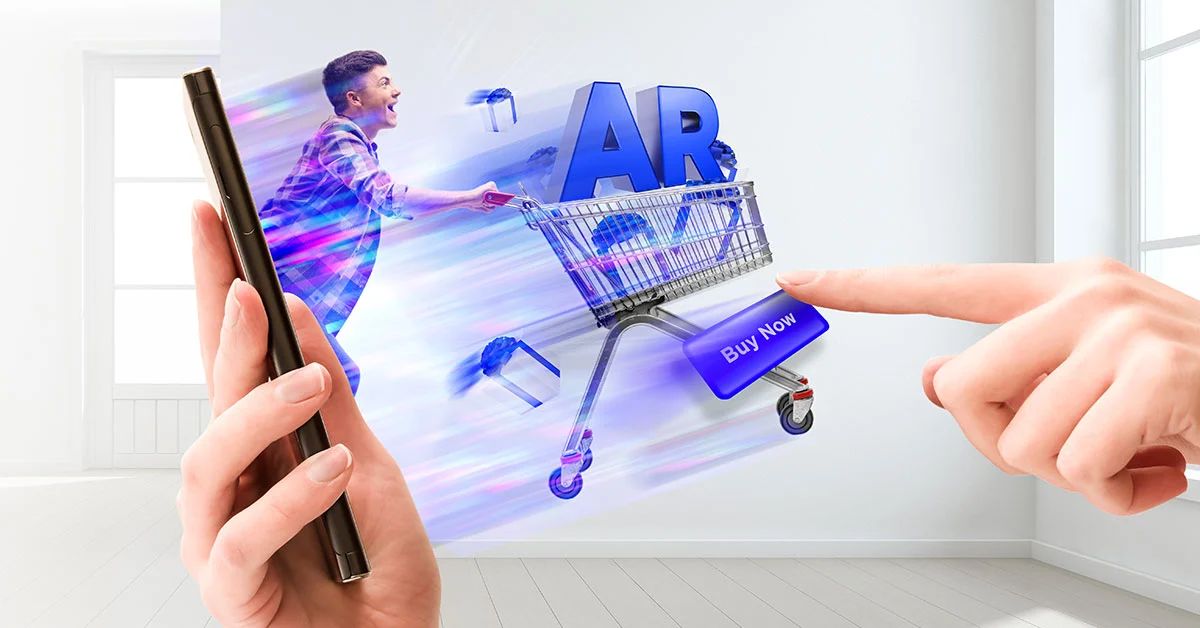
Augmented Reality (AR) is no longer just a futuristic concept; it has become a transformative force in the world of e-commerce. By blending the physical and digital worlds, AR offers consumers a more immersive and interactive shopping experience. As retailers increasingly adopt AR technology, it is revolutionizing how we shop, offering benefits that range from enhanced product visualization to personalized experiences, and ultimately driving custosmer satisfaction and sales.
Enhanced Product Visualization
One of the most significant impacts of AR on e-commerce is the ability to visualize products in a more realistic and detailed manner. Traditional online shopping often leaves consumers guessing about how a product will look or fit in their real-life environment. AR solves this problem by allowing customers to virtually place products in their space. For instance, furniture retailers like IKEA and Wayfair have integrated AR into their apps, enabling users to see how a piece of furniture would look in their home before making a purchase.
This level of interactivity not only boosts consumer confidence but also reduces the likelihood of returns. When customers can accurately visualize a product in their own environment, they are more likely to make informed decisions, leading to higher satisfaction levels. Augmented Reality technology has also been particularly impactful in the fashion and beauty industries, where virtual try-ons allow customers to see how clothing, accessories, or makeup will look on them without having to visit a physical store.
Personalized Shopping Experiences
AR is also paving the way for more personalized shopping experiences. By leveraging data and advanced algorithms, AR can tailor the shopping experience to individual preferences and needs. For example, AR-powered apps can recommend products based on a user’s past behavior or suggest complementary items that match a selected product. This level of personalization helps retailers create a more engaging and relevant shopping experience, increasing the chances of conversion.
Moreover, AR can turn shopping into a fun and interactive experience. Retailers are using AR to gamify the shopping process, offering virtual scavenger hunts, rewards, or interactive experiences that keep customers engaged. These immersive experiences not only enhance customer satisfaction but also encourage repeat visits and foster brand loyalty.
Improved Customer Engagement and Interaction
Another critical impact of AR on e-commerce is the improvement in customer engagement and interaction. Augmented Reality allows customers to interact with products in ways that were previously impossible online. For instance, car manufacturers like BMW and Audi use AR to let potential buyers explore the interior and exterior of their vehicles in 3D, providing a more comprehensive understanding of the product.
This interactive approach helps bridge the gap between online and offline shopping experiences. It enables customers to make more informed decisions, leading to increased trust and satisfaction. AR also offers the potential for real-time assistance, where customers can interact with virtual sales assistants or receive guided tours of products, further enhancing the shopping experience.
The Future of AR in E-Commerce
As AR technology continues to evolve, its impact on e-commerce will only grow stronger. We can expect more advanced AR features that offer even greater levels of interactivity and personalization. For example, future AR applications might include more accurate body measurement tools for fashion e-commerce, allowing for custom-fit clothing or virtual shopping malls where customers can browse and purchase from multiple retailers in one seamless experience.
The integration of Augmented Reality with other emerging technologies, such as artificial intelligence (AI) and the Internet of Things (IoT), will further enhance its capabilities. AI can help AR systems learn from user interactions, making them more intuitive and responsive, while IoT can connect AR experiences with physical devices, creating a truly immersive shopping environment.
AR is reshaping the e-commerce landscape by offering consumers a new, enhanced way to shop. From better product visualization to personalized experiences and increased engagement, AR is not just a trend but a powerful tool that is transforming the online shopping experience. As retailers continue to embrace this technology, AR is set to become an integral part of the e-commerce ecosystem, offering endless possibilities for both consumers and businesses alike.
SitelinkPro is a versatile online tool offering a seamless PNG to JPG converter, an efficient image background remover, and a comprehensive English word dictionary. Whether you need to edit images or enhance your vocabulary, SitelinkPro provides an easy-to-use platform for all your digital needs.




